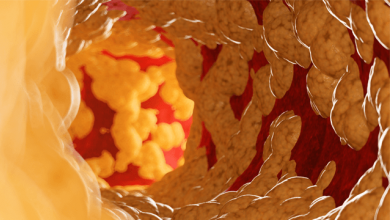Search results
Author(s):
Thierry Lefèvre
Added:
3 years ago
Today, in industrialised countries, we are treating more and more patients with coronary artery disease or structural heart disease, due, in part, to an increase in life expectancy over the last 50 years, as well as an increasing incidence of risk factors such as diabetes and obesity. Accordingly, there has been a rise in the use of contrast-enhanced diagnostic imaging and interventional…
View more
Author(s):
Jean-Pierre Bassand
Added:
3 years ago
Anticoagulants and antiplatelet therapies, and revascularisation/ reperfusion with percutaneous coronary interventions (PCIs) or surgery are the mainstay of modern treatment of acute coronary syndromes (ACS) with and without ST-segment elevation. In addition, depending on the clinical presentation, thrombolytic therapy may be necessary in patients with ST-elevation myocardial infarction (MI) who…
View more
Primary Angioplasty for Acute Myocardial Infarction and the Emerging Role of Renal Insufficiency
Author(s):
Giancarlo Marenzi
,
Antonio L Bartorelli
Added:
3 years ago
Article
Author(s):
Adriano Caixeta
,
Eugenia Nikolsky
,
Roxana Mehran
Added:
3 years ago
Contrast-induced nephropathy (CIN) is one of the most common causes of hospital-acquired acute renal failure.1,2 The development of CIN after diagnostic coronary angiography and/or percutaneous coronary intervention (PCI) is associated with prolonged hospitalisation and a remarkable increase in morbidity, early and late mortality and costs.3–6 CIN is an absolute (≥0.5mg/dl) or relative (≥25%)…
View more
Author(s):
Davide Capodanno
Added:
3 years ago
Although a combination of multiple strategies to prevent and treat coronary artery disease (CAD) has led to a relative reduction in cardiovascular mortality over recent decades, CAD remains the greatest cause of morbidity and mortality worldwide.1 Based on clinical presentation and prognosis, CAD spans from stable presentations (e.g. chronic angina pectoris) to acute coronary syndromes (ACS),…
View more
Author(s):
Harriette Van Spall
,
Steven E Nissen
Added:
1 year ago
ACC.23/WCC — Late-breaker host, Dr Harriette Van Spall (McMaster University, CA) is joined by principal investigator, Dr Steven Nissen (Cleveland Clinic, Cleveland, OH, US) to have a deep dive into the practice-changing CLEAR-Outcomes trial (NCT02993406).The Phase 3 CLEAR-Outcomes trial was conducted to evaluate the impact of bempedoic acid (ETC-1002) on the occurrence of major cardiovascular…
View more
Author(s):
Antonio Greco
,
Claudio Laudani
,
Carla Rochira
,
et al
Added:
1 year ago
Author(s):
William R Colyer Jr
,
Christopher J Cooper
Added:
3 years ago
Renal artery stenosis (RAS) is a common manifestation of atherosclerotic disease. Although the exact prevalence rate for the population as a whole is unknown, RAS is seen in a significant proportion of patients who present with another manifestation of atherosclerosis (Table 1).1–7 Despite this high degree of prevalence, the management of RAS, specifically the role of revascularisation, remains…
View more
Author(s):
Michela Faggioni
,
Roxana Mehran
Added:
3 years ago
With the increasing use of contrast agents for both diagnostic and interventional procedures, contrast-induced acute kidney injury (CI-AKI) has become an important medical concern. It is estimated that CI-AKI is the third most common cause of hospital-acquired renal failure and has significant prognostic implications for patients outcomes.1 The incidence of CI-AKI varies depending on the…
View more
Author(s):
Alfredo Galassi
,
Aaron Grantham
,
David Kandzari
,
et al
Added:
3 years ago
Section A
Techniques for Chronic Total Occlusions Revascularisation
Access Route, Guiding Catheter Selection and Contralateral Injection
The femoral approach is the preferred access route by most operators. However, the radial approach might be chosen because of severe peripheral vascular disease, operator’s preference or for contralateral injection. The guiding principle of access selection is…
View more












